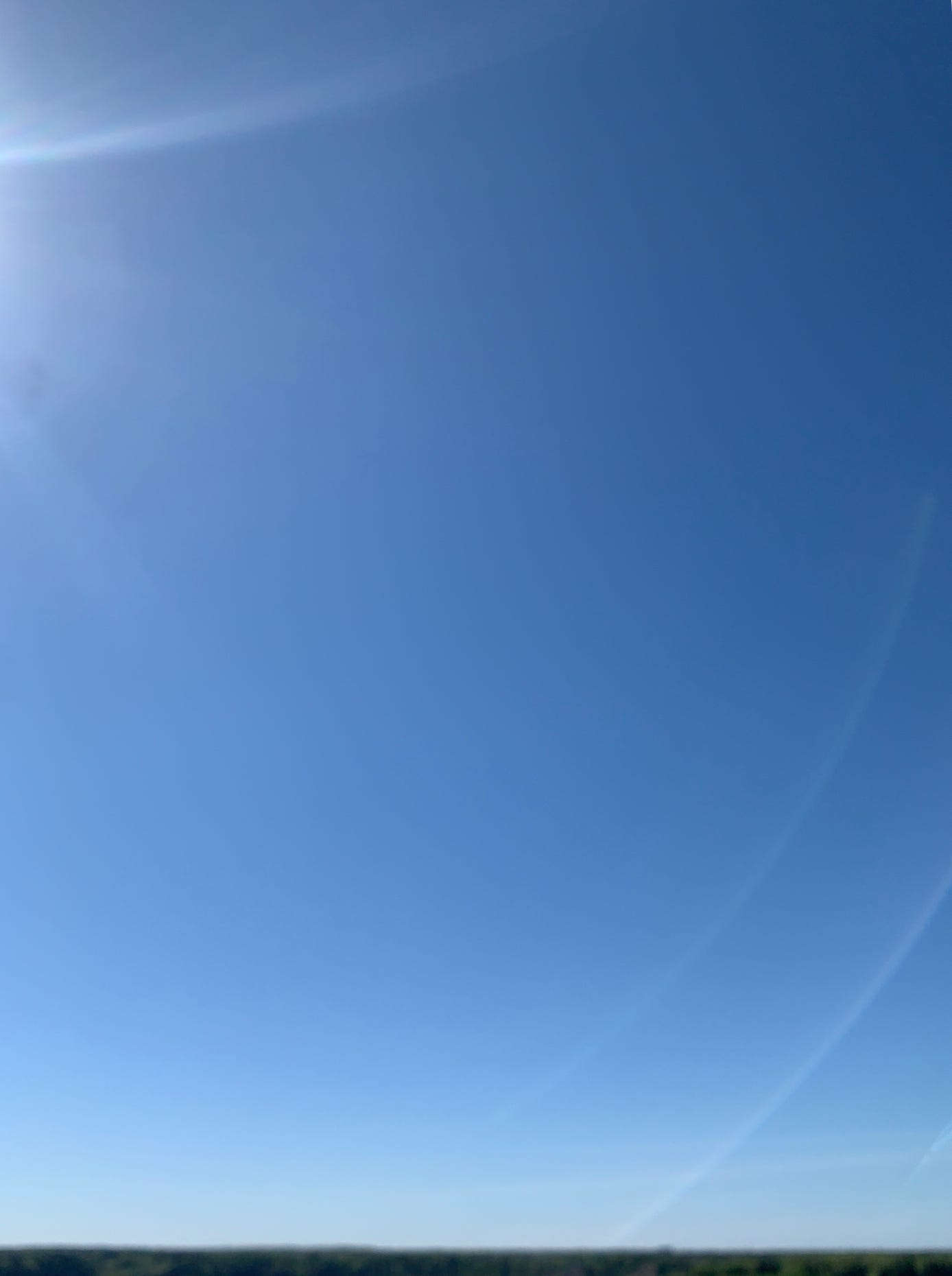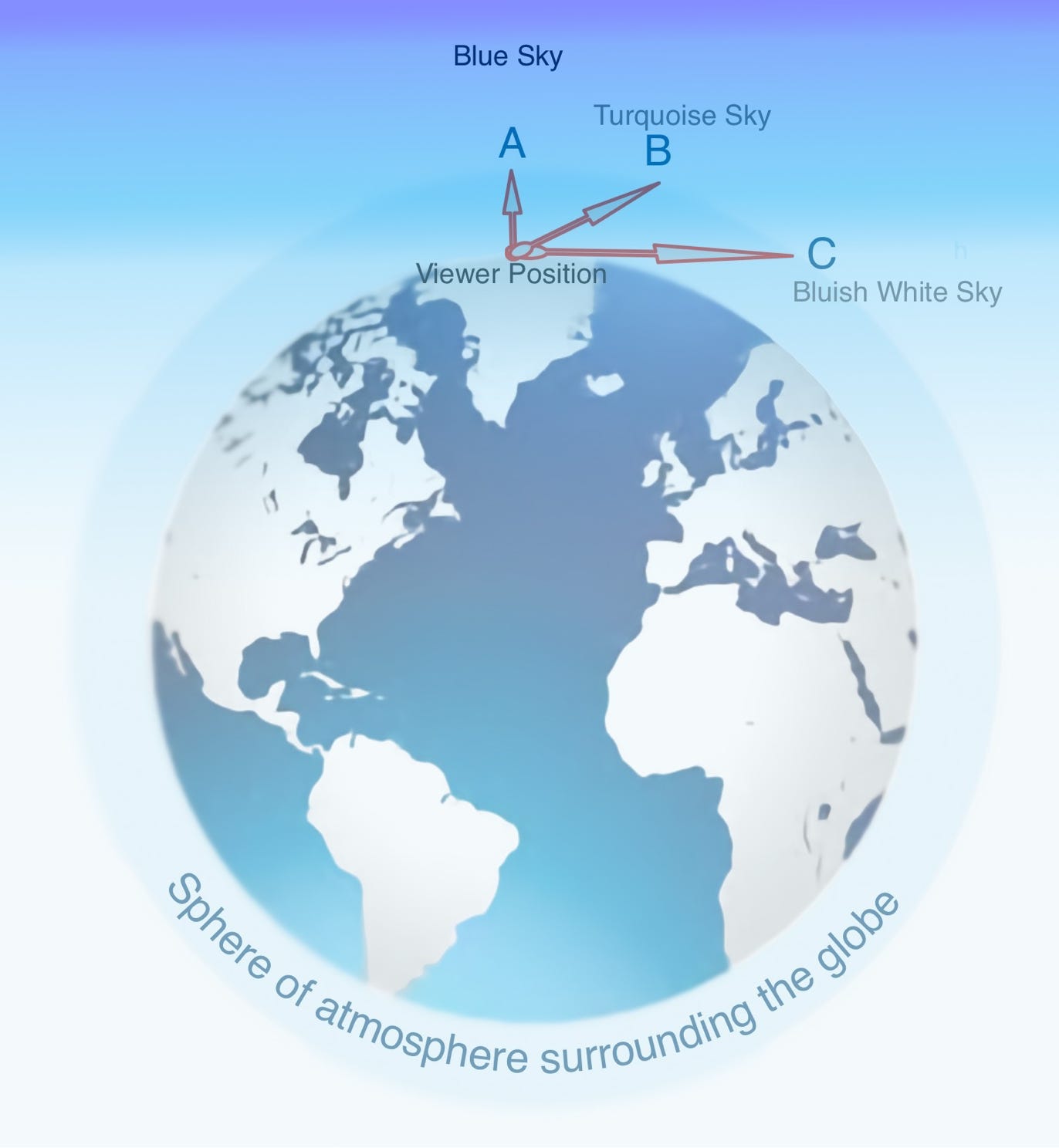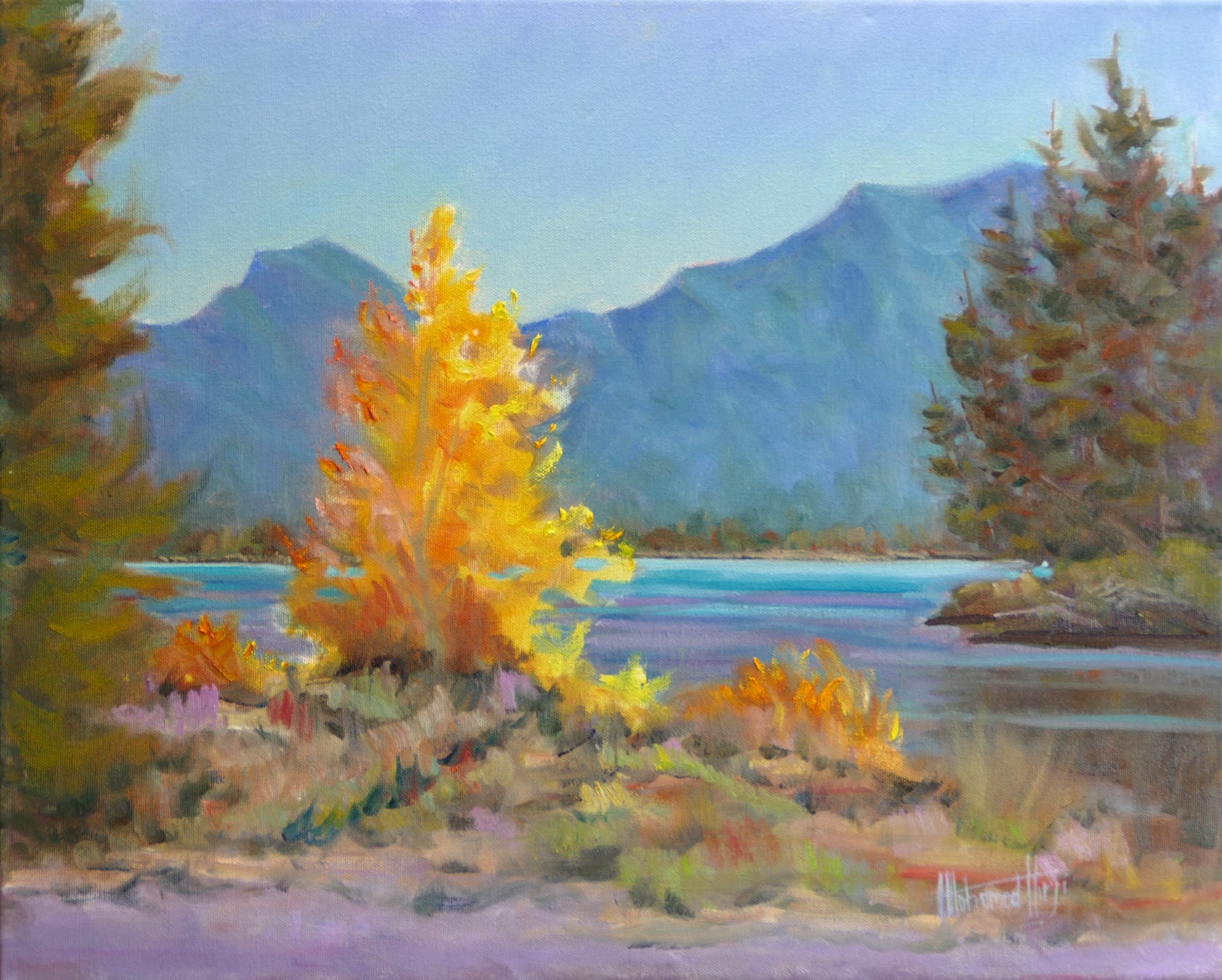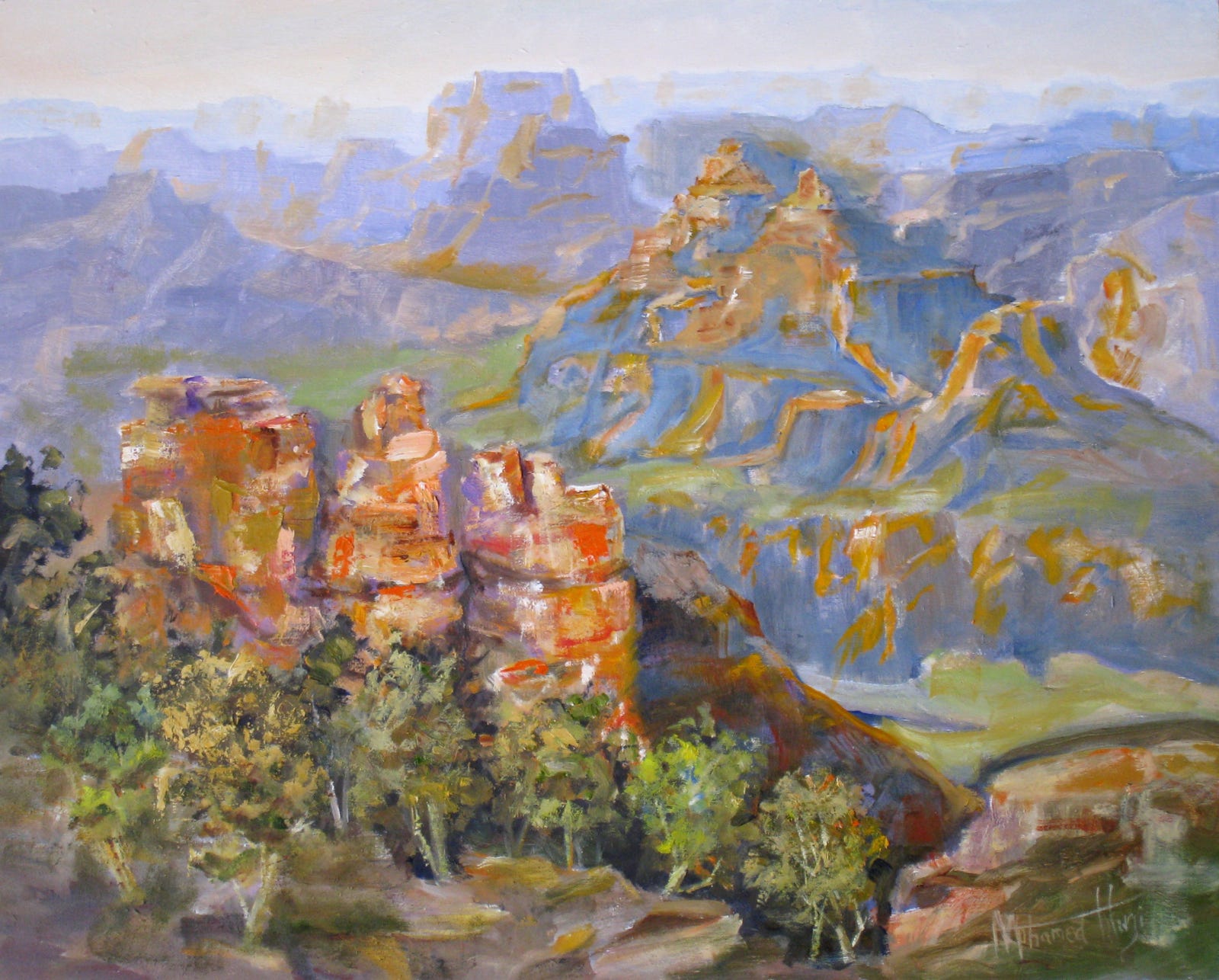Leonardo Da Vinci is generally credited with development of Aerial or Atmospheric perspective. Essentially we are all aware from our observations that objects in the distance appear less distinct (fuzzy), there is less contrast between the darks and the lights, and they appear blueish white, gradually losing the yellows and red hues of the inherent colour of the object. This is the result of atmospheric perspective.
This phenomenon is based on light from the object passing through a layer of atmosphere to the eyes of the viewer. The atmosphere which apart from the atmospheric gases is composed mainly of water vapour and dust particles acts as a filter, filtering out longer wavelengths of light leaving the blue hues (shorter wavelengths). Not unlike viewing an object through fog or through several layers of clear glass. This principle is elegantly explained by physics of light in which certain wavelengths of light are filtered gradually as the distance from the viewer increases. (longer wavelengths are filtered first).



